Every year, eCommerce businesses face a glaring challenge that hits right where it hurts: the bottom line. Product returns, often overlooked, are not just minor inconveniences but significant financial setbacks.
Why does this matter so much? A return isn't just a product coming back; it's a potential customer walking away. It's a ripple effect where a single return can impact the purchase decisions of future customers, influenced by reviews and word of mouth.
Imagine this: in 2021, online shoppers returned a staggering 20.8% of all merchandise ordered, as reported by the National Retail Foundation.
This isn’t just a few boxes sent back; it’s a mammoth $761 billion worth of goods — a treasure trove of revenue that never materialized for e-commerce businesses.
Thanks in part to supply chain challenges and rising prices, processing the return of a $50 product is now expected to cost e-commerce stores an average of $33, according to Axios.
One in three items bought online are returned, much higher than the 9% return rate for items purchased in-store. ‘Buy, try, return’ culture has also become a more frequent habit amongst online shoppers, with a rise in the number of orders placed to return the entire order after trying on items for social media.
In this article, we delve into secrets of how to reduce returns in e-commerce, presenting not the usual suspects, but innovative strategies to curb this return epidemic.
We aim to offer tactics that reduce returns and elevate customer satisfaction and loyalty. We're here to guide you through transforming your approach to returns, making it a strategic asset rather than a financial drain.
Understanding the Root Causes of Returns
Before diving into strategies for how to deal with product returns, it's crucial to understand why customers are sending items back in the first place. Addressing the root causes is akin to fixing a leaky faucet; without this step, you're just mopping up water without stopping the flow. Here are the key reasons behind the return epidemic:
Unmet Customer Expectations
This is a big one. Customers are disappointed when a product doesn't live up to their expectations. This disconnect might stem from misleading product descriptions, inadequate visual representations, or hyped-up marketing that sets unrealistic expectations.
Product Discrepancies
It's all in the details – color, design, size, and fit. Imagine ordering a navy blue sweater and receiving one in royal blue, or selecting a size based on a standard chart only to find it doesn't fit. Differences like these between the product ordered and the product got are a big reason why people send things back.
Damaged or Defective Items
No one likes to unwrap a new purchase to find it damaged or defective. Whether due to poor quality control or mishandling during shipping, receiving a flawed product is a surefire trigger for a return.
Lack of Reviews
Online shopping needs the tactile experience of in-store purchases. Here, reviews are gold – they provide a sense of assurance and real-life perspective. A lack of reviews can leave customers shooting in the dark, increasing the likelihood of dissatisfaction and, consequently, returns.
5 Working Ways To Minimize Returns
Let's start with a tech-savvy idea that's changing the way people shop online as we move on to new ways to cut down on returns.
1. Virtual Try-On
The Concept: This technology allows customers to see how products look on them before making a purchase.
By using augmented reality (AR) and sometimes artificial intelligence (AI), virtual try-on tools can simulate how clothes fit, how glasses look on one's face, or even how a shade of makeup appears on their skin.
This immersive experience bridges the gap between the physical and digital shopping realms, reducing the guesswork and uncertainty that often leads to returns.
Successful Implementations: Many brands are already reaping the benefits of this technology. For instance, Warby Parker’s “Virtual Try-On” app lets customers see how different eyeglasses fit their faces, drastically reducing returns due to style or fit issues.
Sephora’s “Virtual Artist" app allows users to test makeup shades with stunning accuracy. These examples showcase how virtual try-on tools not only reduce returns but also enhance customer engagement and satisfaction.

Enhancing Customer Experience: The true beauty of virtual try-on technology lies in its ability to personalize the shopping experience.
Customers enjoy a unique, interactive way to shop that feels both fun and practical. This not only helps in making more confident purchase decisions but also builds a stronger emotional connection with the brand.
2. Product Design Tool For Customization
The Concept: In the realm of minimizing returns, one powerful approach is empowering customers through product design tools for customization.
This innovative feature allows customers to become co-creators, designing or personalizing products to their specific tastes and preferences.
From choosing colors to adding personal touches, these tools transform shopping from a passive activity into an engaging and creative process.
Customization Meeting Preferences: When customers have a hand in creating their product, the likelihood of a return diminishes significantly.
This is because the product they receive is no longer just an item they purchased; it’s a personalized creation that resonates with their individual preferences.
The emotional attachment to a self-designed product is often stronger, reducing the chances of dissatisfaction and subsequent returns.
Successful Business Examples: Many businesses are tapping into the potential of this strategy. For example, Nike’s “Nike By You” platform allows customers to design their sneakers, choosing everything from the material to the color scheme.
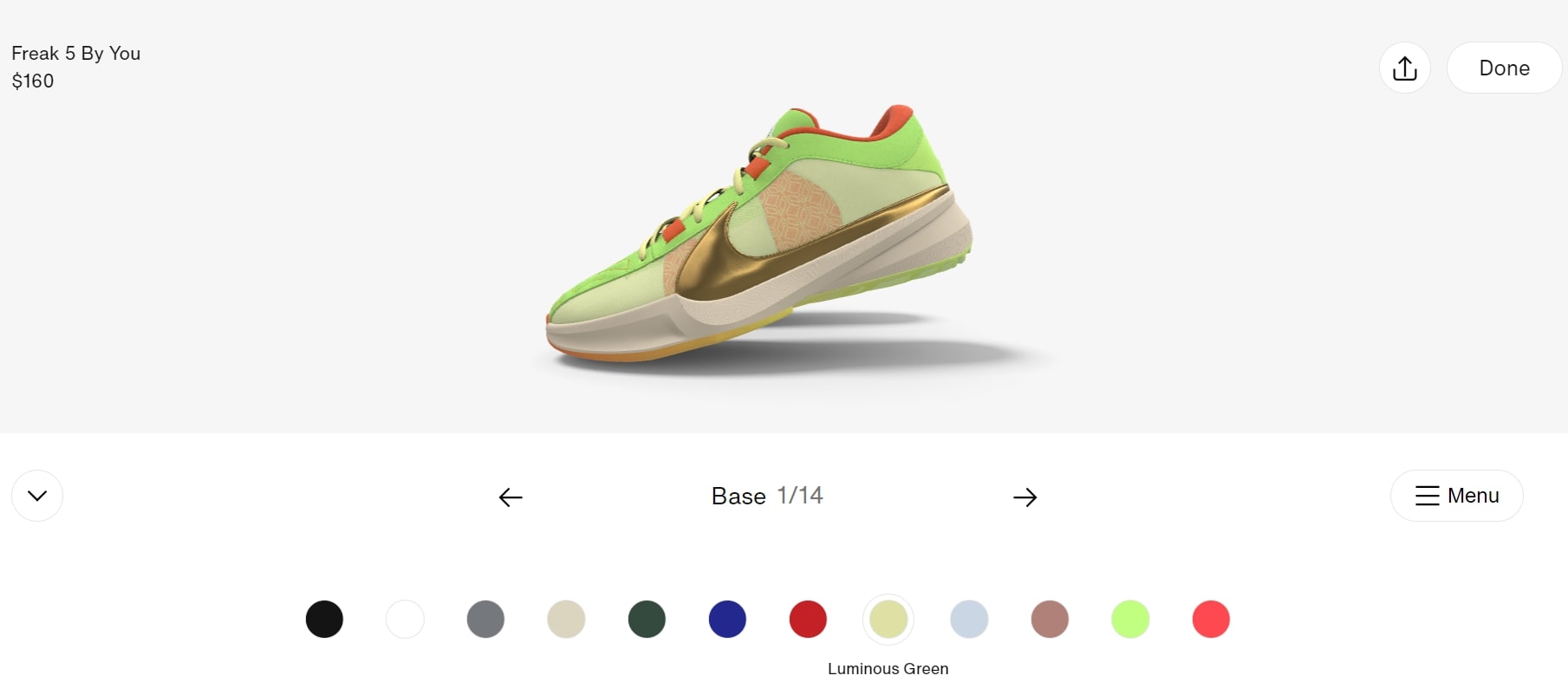
Another example: MK Socks, a leading supplier of custom socks and jerseys, yielded remarkable results with LiveArt's tailored solution.
LiveArt implemented the ability to personalize color, logo upload, and jersey number placement, providing customers the flexibility to design their team orders with precision. MK Socks's success story resulted in increased sales by 10 times.
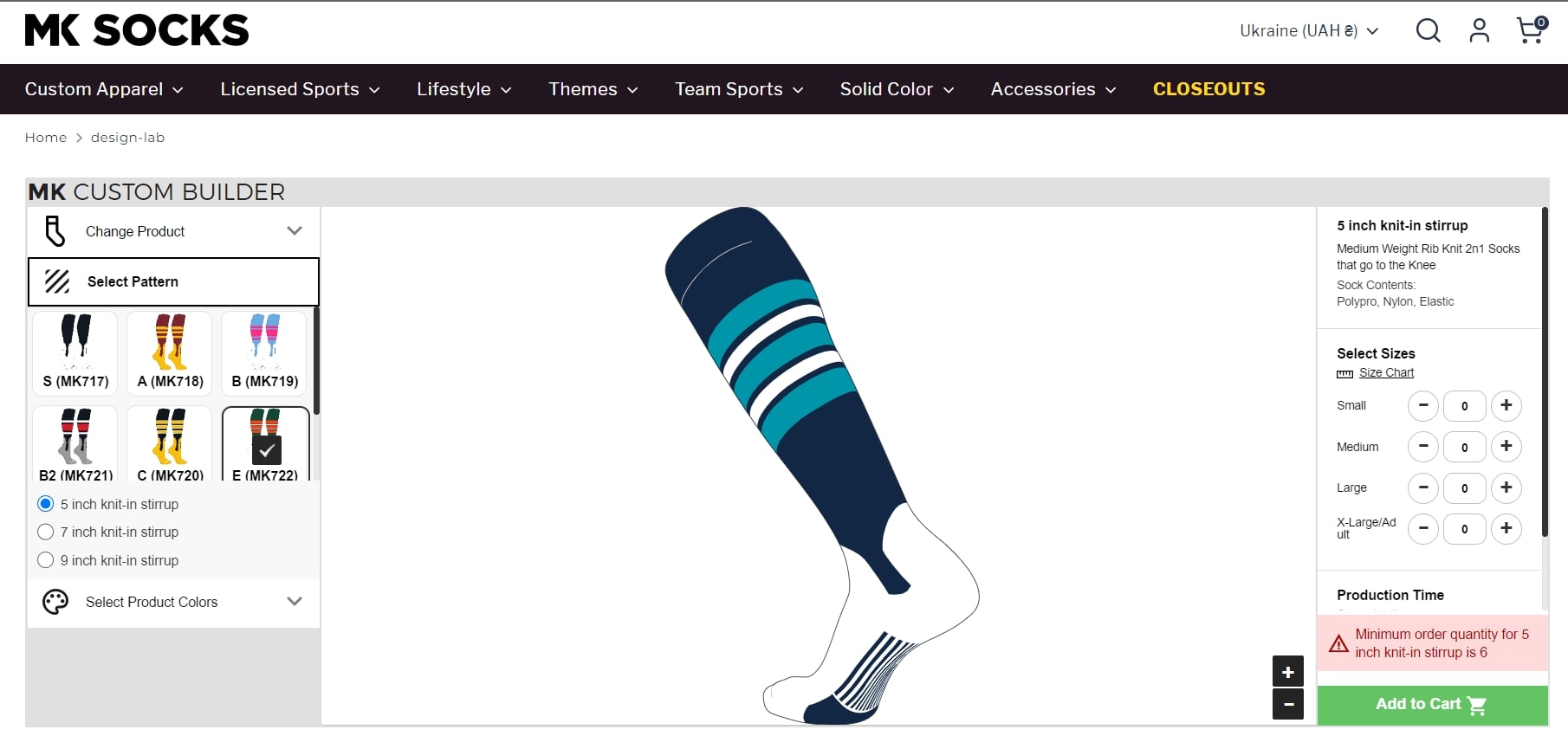
These examples illustrate how customization can be a powerful tool in reducing returns and enhancing customer loyalty.
Incorporating a web-to-print online designer into your business can transform the way you handle orders and customer satisfaction. It opens up a new realm of possibilities for personalization, directly addressing the common causes of returns in eCommerce.
Web To Print Online Designer
Versatile Application: The web-to-print online designer is not just a tool; it's a versatile solution adaptable to various business scenarios.
Whether integrated into an eCommerce platform, used as Get a Quote software for B2B customers, implemented in crowdfunding or teambuilding projects, or incorporated in a CRM system for corporate orders, this technology is flexible enough to fit different business needs.
Customization Options: This tool revolutionizes how orders are collected and processed.
Customers can personalize blank products or modify ready templates before checking out.
Alternatively, they can design products from scratch or use pre-existing templates to get a quote.
Such versatility caters to a wide array of customer preferences, significantly reducing the likelihood of returns due to dissatisfaction.
Moreover, we see the significant benefit of the Get a Quote feature for sports uniform companies to offer team orders which leads to more effective sales.
Streamlined Setup for Diverse Products: The true power of a web-to-print online designer lies in its ability to adapt to virtually any product type.
From setting up personalized apparel and uniforms to creating promotional products, jewelry, signs, banners, and business stationery, the possibilities are endless.
It even accommodates multiple panel colored products, ideal for sports uniforms, and supports various printing techniques like screenprinting, DTG, vinyl applique, or embroidery.
Advanced Features: The tool is not just about personalization; it's about precision and convenience.
It allows for the setup of 3D products or 3D realistic-look products which improves customer experience.
The final output files allow companies to send them to production while automating all processes and eliminating manual work and back-and-forth communication for team members.
This level of detail ensures that the final product matches the customer's expectations to the highest degree, further reducing the chance of returns.
3. Personalized Shopping Experience
The Concept: Personalized shopping experiences have a profound impact on customer satisfaction.
When customers feel understood and catered to, their connection with the brand strengthens.
This bespoke approach not only increases the likelihood of successful purchases but also fosters brand loyalty.
The result is a significant reduction in return rates as customers receive products that closely match their expectations and desires.
Leveraging Customer Data for Recommendations: The era of one-size-fits-all is fading. Now, the spotlight is on personalization – using customer data to tailor product recommendations.
By analyzing past purchases, browsing history, and customer preferences, eCommerce platforms can curate a shopping experience that feels uniquely designed for each customer.
This personal touch not only enhances the shopping experience but also significantly improves the relevance of the products shown, thereby reducing the likelihood of returns.
AI-Driven Preference Prediction: The integration of AI-driven algorithms takes personalization a step further.
These advanced systems can predict customer preferences with remarkable accuracy, suggesting products that align closely with the shopper's tastes and needs.
By presenting items that a customer is more likely to appreciate and keep, these intelligent algorithms play a crucial role in minimizing returns.
Successful Business Examples: Amazon uses sophisticated algorithms to analyze customer data, including past purchases, search history, and items in the shopping cart.
This data-driven approach allows Amazon to offer highly personalized product recommendations.
For example, if a customer frequently purchases or browses science fiction books, Amazon's homepage, and recommendation emails will prominently feature new and popular titles in that genre.
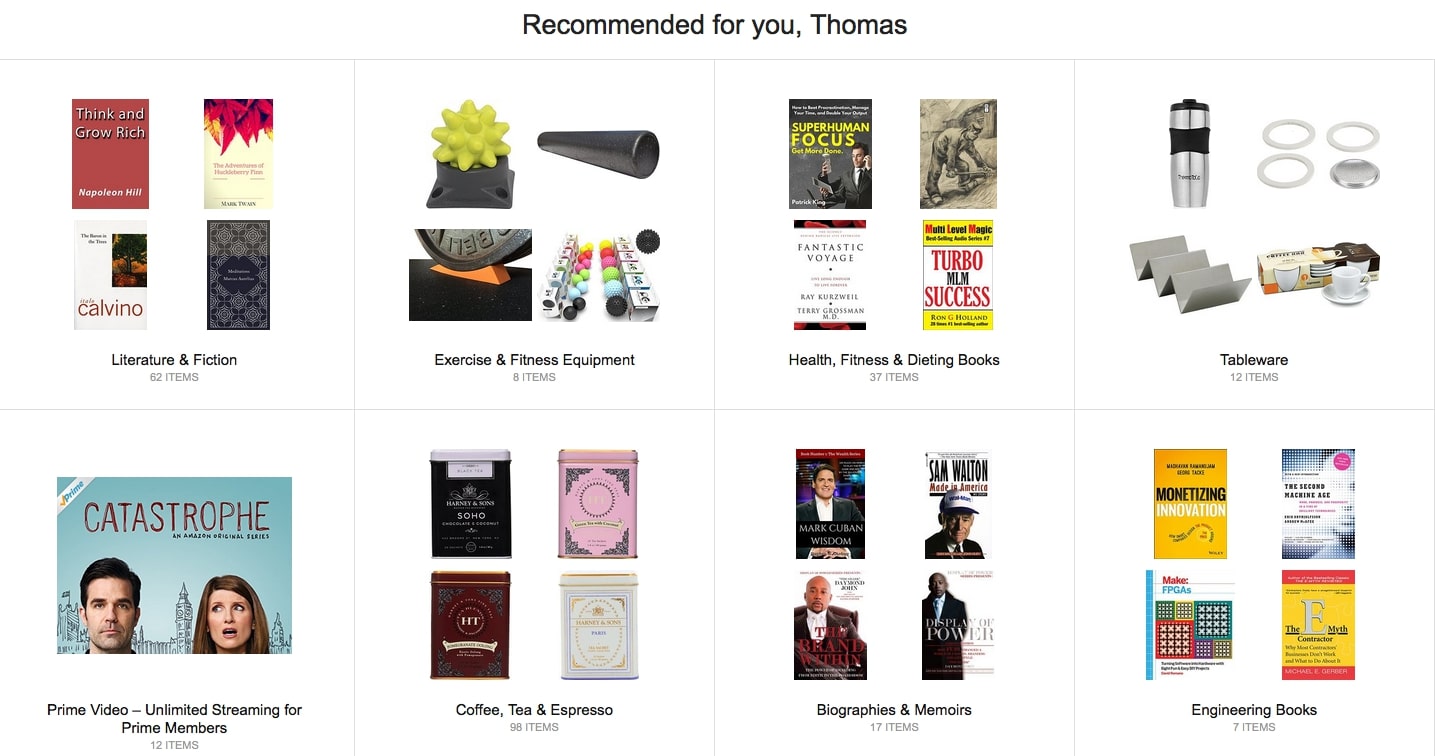
4. Analyzing Return Data for Continuous Improvements
The Concept: The key to reducing returns lies in understanding them.
Utilizing analytics tools to scrutinize return data can uncover patterns and trends that might otherwise go unnoticed.
These tools can analyze various factors like return rates per product, reasons for returns, and customer demographics.
By identifying these patterns, businesses can pinpoint specific issues, whether they're related to product quality, description accuracy, or customer expectations.
Customer Surveys for Direct Feedback: While analytics provide quantitative insights, customer surveys offer qualitative feedback directly from the source.
Surveys conducted post-return can reveal the underlying reasons why customers were dissatisfied, providing invaluable insights for improvement.
This feedback can guide product adjustments, description refinements, and even customer service enhancements.
The Importance of a Continuous Improvement Mindset: Adopting a mindset of continuous improvement is crucial in the dynamic landscape of eCommerce.
This approach involves regularly analyzing return data, actively seeking customer feedback, and continuously refining products and processes.
To learn how to reduce customer returns, focus on enhancing the accuracy of product descriptions, implement dynamic sizing charts, and allow customers to be involved in the personalization process in real time.
Tools for Analysis: There are several tools available that can assist in this process.
For example, Google Analytics offers insights into customer behavior on your website, which can help identify potential issues leading to returns.
Software like Tableau or Microsoft Power BI can be used to analyze return patterns and trends in depth.
Additionally, customer feedback tools like SurveyMonkey or Typeform can facilitate gathering and analyzing customer feedback.
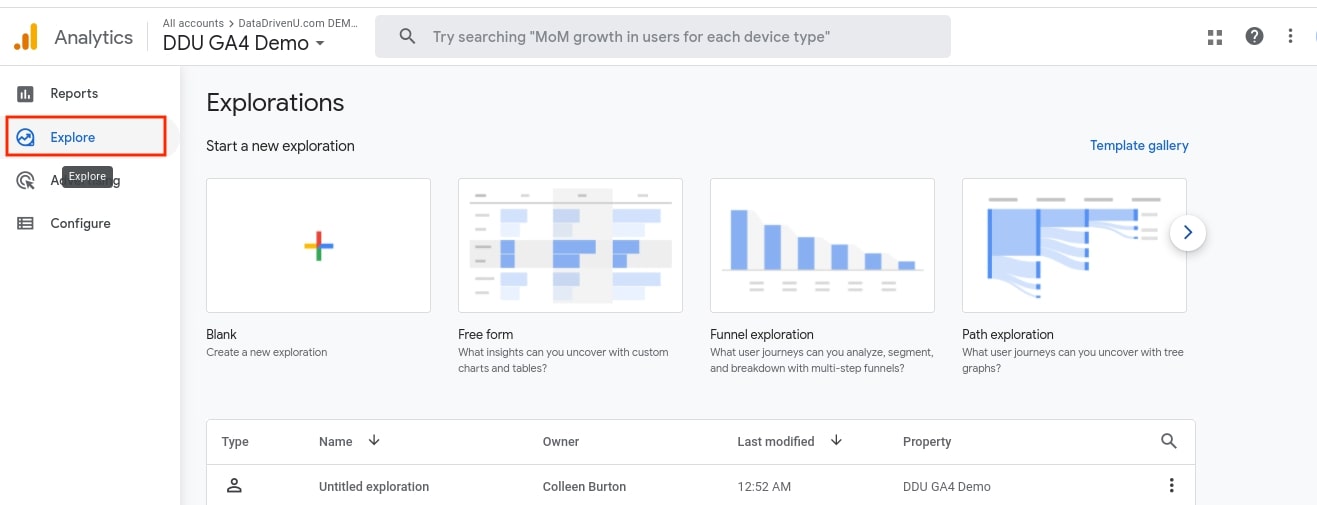
5. Dynamic Sizing Chart
The Concept: One of the most common reasons for returns in clothing and apparel e-commerce is size and fit issues.
To combat this, implementing a dynamic sizing chart can be a game-changer.
Unlike static sizing charts, which offer a general guide, dynamic sizing charts provide a more personalized and accurate measurement guide based on customer-specific data like height, weight, body shape, and preferred fit.
Adaptability Across Product Categories: The beauty of a dynamic sizing chart lies in its adaptability.
Each product category can have variations in size and fit.
A dynamic chart can adjust its recommendations accordingly, whether it’s for dresses, jeans, or sportswear.
This ensures that customers get a tailored suggestion for each type of garment, increasing the likelihood of a perfect fit on the first try.
Success Stories in Reducing Returns: Many businesses have seen significant reductions in return rates by implementing dynamic sizing charts.
For instance, ASOS, a leading online fashion retailer, introduced a feature called “Fit Assistant” which helps customers find the right size by comparing the measurements of the items they're viewing with those of items they've purchased before.
This personalized approach has not only enhanced customer satisfaction but also led to a noticeable decrease in size-related returns.
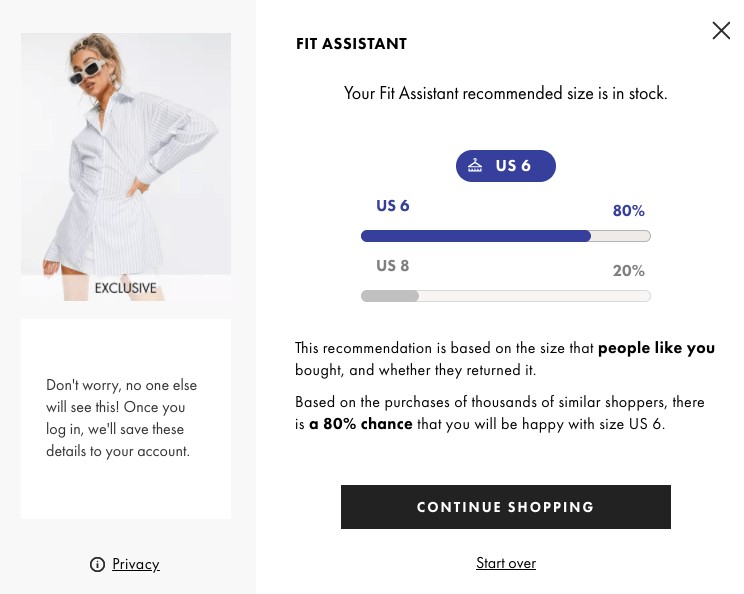
The Role of Technology: Modern dynamic sizing charts often leverage advanced technologies like AI and machine learning to refine their accuracy.
By continually learning from customer feedback and purchase history, these systems become more adept at predicting the correct size for each customer, reducing the likelihood of returns due to poor fit.
How To Adress Unmet Expectations - Steps To Resolve
Unmet expectations in orders can be a major setback for eCommerce businesses, not only leading to returns but also potentially harming customer relationships and brand reputation.
It's important to deal with these problems quickly. To manage and fix unmet expectations successfully, follow these steps:
.jpg)
1. Immediate Acknowledgment
When a customer expresses dissatisfaction, the first step is to acknowledge their concern immediately. This shows that you value their feedback and are committed to resolving their issue. Quick, empathetic communication can go a long way in maintaining customer trust.
2. Understand The Issue
Before jumping to solutions, take time to fully understand the customer's concern. Is it about the product quality, a discrepancy in the order, or something else? Clear understanding is key to providing an effective resolution.
3. Offer a Prompt Resolution
Once the issue is understood, offer a resolution. This might involve sending a replacement product, offering a refund, or providing a discount on future purchases. Ensure that the resolution aligns with the nature of the complaint and the customer's expectations.
4. Learn And Improve
Every unmet expectation is an opportunity to learn. Analyze what went wrong and why. Was it a product description issue, a quality control lapse, or a shipping problem? Use these insights to make necessary improvements to prevent similar issues in the future.
5. Follow-Up
After resolving the issue, follow up with the customer. Ensure that they are satisfied with the resolution and ask for feedback. This not only shows that you care about their experience but also helps in building a long-term relationship.
6. Implement Preventative Measures
Based on the feedback and the nature of the issue, implement changes to prevent future occurrences. This could involve updating product descriptions, improving quality checks, or enhancing customer service training.
7. Use Transparent Communication
Be transparent about the measures you are taking to address the issue. Customers appreciate honesty and are more likely to remain loyal if they see that you are making efforts to improve.
8. Review And Adjust Policies
Regularly review your eCommerce returns and customer service policies. Ensure they are customer-friendly and aligned with best practices in the industry. Adjust them as needed based on customer feedback and industry trends.
By following these steps, businesses can effectively manage unmet expectations, turning potentially negative experiences into opportunities for improvement and customer loyalty building.
Conclusion
The key to long-term success lies in a relentless commitment to customer satisfaction.
Implementing targeted strategies like virtual try-on technology and personalized shopping experiences is essential in learning how to reduce returns in eCommerce, ensuring customer satisfaction and business growth.
Putting customer happiness first not only helps you reach your short-term goal of lowering returns, but it also builds a stronger, more loyal relationship with your customers.
Happy customers will buy from you again and will tell others about their good experiences with your brand. This will help your business grow in a way that lasts.
However, achieving reduced returns is not a one-time effort. The eCommerce world is dynamic, with evolving customer expectations and technological advancements. Staying ahead in this competitive arena requires continuous adaptation and innovation.
Listening to your customers, analyzing trends, and being open to new technologies and strategies are essential for staying relevant and successful.
Are you ready to revolutionize your eCommerce business? Begin today by implementing one of the strategies we’ve explored.
Stay up to date and follow us on LinkedIn, Facebook and YouTube.